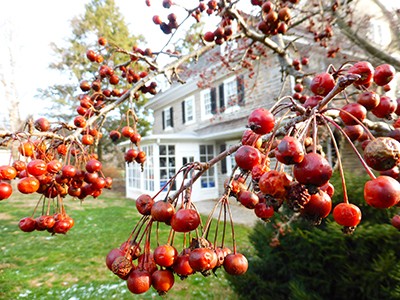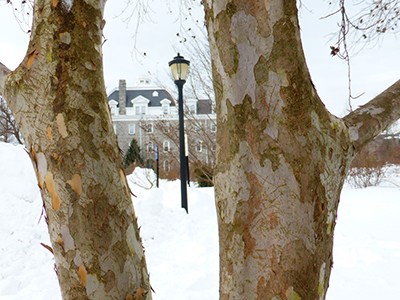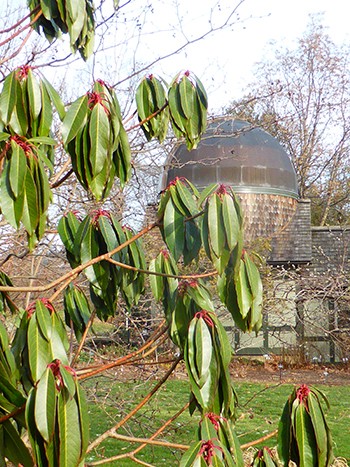Plants of the Week: February 1
The website, Great Plant Picks, provides a concise and on-point description of Malus ‘Strawberry Parfait’. “‘Strawberry Parfait’ is red in bud, flowers are large and light pink with a deeper pink margin. It is a heavy bloomer and one of the best pink flowered cultivars. Fruits are deep red and persistent into the winter. Foliage is reddish purple in spring and turns green in summer. This is one of the broader growing cultivars and is excellent in groves or a substitute in a rustic setting when you would like replicate the effect of an apple orchard without the overabundance of fruit and maintenance of a fruit producing orchard.” I must admit to not being overly keen on flowering crabapples. With that said, ‘Strawberry Parfait’ is the exception. I especially appreciate its disease resistance! Photo credit: J. Coceano
Stewartia x henryae is a hybrid cross between Stewartia pseudocamellia and Stewartia monodelpha. Stewartia truly embody four seasons of interest: flowers, colorful fall foliage, and exfoliating bark in a patchwork of colors. The cross has yielded one cultivar: Stewartia x henryae ‘Skyrocket’. Polly Hill, legendary horticulturist, noted “‘Skyrocket’ was identified by Stephen Spongberg as being a hybrid…which had been given the name S. x henryae for the Gladwyne, Pennsylvania botanist, Mrs. J. Norman Henry, who was the first to make this cross. The bark is smooth with a gleaming patchwork of muted rose, cocoa brown, and cream, and shining, and bare of branches for many feet from the earth.” Photo credit: J. Coceano
“My broadleaf evergreens are wilting in the cold! What should I do?” has been a common question of late. Daphniphyllum, pictured, and Rhododendron are looking especially wilty now. William Cullina, Executive Director of the Coastal Maine Botanical Garden, explains that cold-weather photosynthesis is 50 percent more effective in the drooping position. Second, curled leaves thaw out more gradually, thus reducing freeze damage. Fear not! The plant is merely taking measures to protect itself. Photo credit: J. Coceano








No Comments